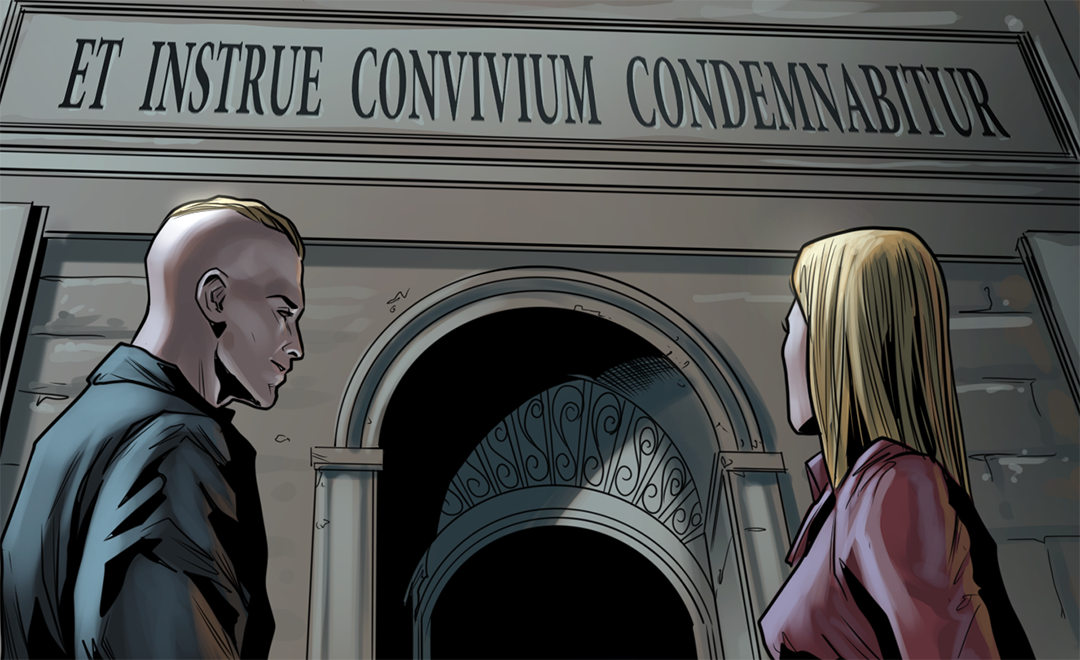Some of you will recall that I thoroughly, and in some detail, demonstrated the way in which, according to the present scientific understanding of astrophysics, genetic biology, and mathematics, the modern Neo-Darwinian synthesis of the theory of evolution by (mostly) natural selection is impossible, caught as it is between the Scylla of a fixed amount of time and the Charybdis of the number of fixed mutations required to take place in the evolution between one historical species and a present species.
To put it in the most simple terms that even a biologist should be able to follow, if we are told that a football team has gained 1,500 yards on the ground while averaging three yards per rushing play, and we know that the maximum number of offensive plays per team per game is 84, then we know, beyond any shadow of a doubt, that the yards reported were not gained in a single 60-minute game. They could not have been. It is impossible.
The math is inexorable. The maximum number of yards that could have been gained on the ground in a single game, given a three yards-per-carry average, is 252. It does not matter if a desperate proponent of Neo-Schembechlerism proposes the idea that perhaps the team ran a hurry-up wishbone offense, or that the quarterback was a dual-threat as a runner, or that the team played in a league known for its terrible run defenses, or that one of the halfbacks is known to have one ripped off a 99-yard gain, or that NCAA teams have been known to play up to seven overtime periods, or that up to five different players touched the ball on the same play. The math is inexorable. The assertion that a football team which averages three yards per carry gained 1,500 yards on the ground in a single game is flat-out impossible. We can say with absolute certainty that it never happened without knowing any details whatsoever about the team or the game.
In like manner, the number of fixed mutations that are presently observed to distinguish two species, whether we contemplate modern Man and the Chimpanzee–Human last common ancestor (CHLCA) or the dog and one of the therapsids, are considerably – CONSIDERABLY – in excess of the maximum amount of time that could have passed since the speciation process is believed to have begun. There is only one defense against this straightforward mathematical observation, and that is the idea that enough parallel mutations happened very, very quickly to significantly reduce the average time per fixed mutation to permit it to happen in the intervening time period.
The problem here, of course, is that the numerical gap that needs to be filled is so large that if that were the case, then these mutations would be have to be happening so rapidly, and fixing in parallel so quickly, that we could observe evolution by natural selection happening in real time all the time.
But we don’t.
And, as predicted, the new advances in genetic science combined with new archeobiological discoveries are methodically reducing the already insufficient time in which evolution had to go from point A to point Z.
- Peştera Muierii woman is related to Europeans, but she is not a direct ancestor
- Reduced diversity in Europe caused by Last Glaciation, not out-of-Africa bottleneck
- Genetic load appears indifferent across 40,000 years of European history
- New DNA extraction approach recovers up to 33 times more DNA from ancient remains
Summary
Few complete human genomes from the European Early Upper Palaeolithic (EUP) have been sequenced. Using novel sampling and DNA extraction approaches, we sequenced the genome of a woman from “Peştera Muierii,” Romania who lived ∼34,000 years ago to 13.5× coverage. The genome shows similarities to modern-day Europeans, but she is not a direct ancestor. Although her cranium exhibits both modern human and Neanderthal features, the genome shows similar levels of Neanderthal admixture (∼3.1{cc08d85cfa54367952ab9c6bd910a003a6c2c0c101231e44cdffb103f39b73a6}) to most EUP humans but only half compared to the ∼40,000-year-old Peştera Oase 1. All EUP European hunter-gatherers display high genetic diversity, demonstrating that the severe loss of diversity occurred during and after the Last Glacial Maximum (LGM) rather than just during the out-of-Africa migration. The prevalence of genetic diseases is expected to increase with low diversity; however, pathogenic variant load was relatively constant from EUP to modern times, despite post-LGM hunter-gatherers having the lowest diversity ever observed among Europeans.
Translation: there was even more genetic diversity among early humans than previously believed, which further increases the required rate of time per fixed mutation.
Or to put the point in even more simple terms, it is mathematically more credible to claim that you drove from New York to Los Angeles in a 1976 Cadillac Eldorado in one hour on a single tank of gas than to claim that any modern mammal evolved from the first crown group mammal in the amounts of time currently estimated.

